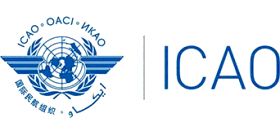 ICAO Council endorses COVID-19 updated global aviation recovery guidelines
ICAO Council endorses COVID-19 updated global aviation recovery guidelines
ICAO Council endorsed (10-Nov-2020) updates to its Aviation Recovery Task Force's (CART's) 'Take-off' Guidelines for international air transport. The new guidelines provide recommendations for countries to consider adopting per their current local medical status, and on specific priorities including general hygiene, masks and face coverings, health screening and declarations, air passengers with reduced mobility, and the mental health and well-being of aviation workers and passengers. New guideline considerations comprise:
- Testing and cross border risk management measures:
- CART recommends states contemplating testing should apply the approach outlined in the ICAO Manual on Testing and Cross Border Risk Management Measures (currently under final review by the WHO, with expected publication date 16-Nov-2020). If doing so, states are also encouraged to consider affordable testing means to minimise travel costs for passengers. The ICAO Manual provides assessment tools that states can use to evaluate and implement testing and related measures as part of their decision-making process, as well as a guideline on how to assess different mitigation strategies and on how they can contribute to public health risk management;
- To support states in developing a risk assessment framework, the Collaborative Arrangement for the Prevention and Management of Public Health Events in Civil Aviation (CAPSCA) has developed a generic decision-making tool which can be used to determine the inherent and residual risk level of transporting potentially infectious passengers. Each state will need to conduct its own assessment and is encouraged to use the processes outlined in the Manual as the basis for its assessment. Risk tolerance varies between states and depends on many factors. This has an influence on the amount of residual risk a state can accept. The determination of such level, as well as the policies and measures to mitigate the risk, is not universal and is within specific priorities and authority of each individual state;
- Masks and Public Hygiene guidelines: Guidance on face coverings and medical masks has been updated to allow passengers to travel that cannot tolerate a face covering or medical mask, such as young children or individuals with physical disabilities, respiratory or other medical conditions. It also includes a new section on general hygiene to be followed at airports and on-board aircraft;
- Public Health Corridors (PHCs): States are strongly encouraged to collaborate with each other regarding the PHC implementation. To enable mutual recognition, states are strongly encouraged to actively share information with other states and enter into bilateral or multilateral discussions with each other to implement PHCs in a harmonised manner. To facilitate implementation of PHCs, the ICAO Implementation Package on Establishing a PHC will be available to states on 16-Nov-2020;
- Aviation safety-related measures:
- States that have filed differences for temporary departures from ICAO Standards under the COVID-19 Contingency Related Differences (CCRD), or that have granted other COVID-19-related regulatory alleviation, are reminded that these differences and alleviations were intended to be temporary in nature;
- Prolonged differences and alleviations, such as those related to personnel certification and licensing, could result in an elevated operational safety risk. States should, therefore, put in place the necessary measures to manage those risks and should not extend alleviations (both core and extended CCRDs) beyond 31-Mar-2021;
- States are encouraged to facilitate access to medical and training facilities, including flight simulation training devices used for flight crew to maintain their recency of experience and proficiency;
- States also are strongly encouraged to refer their operators to the ICAO Operational Safety Measures website, where links to guidance documents developed by ICAO, ACI, IATA, the ICCAIA, and others, are available;
- As states work to restart air travel, a large proportion of the global fleet, air crew, airport operations staff, and air traffic controllers that have been inactive for prolonged periods will need to be reactivated and retrained, where appropriate
Source: Centre for Aviation
